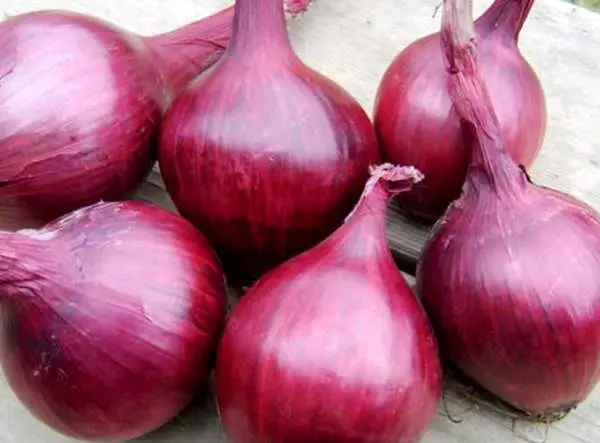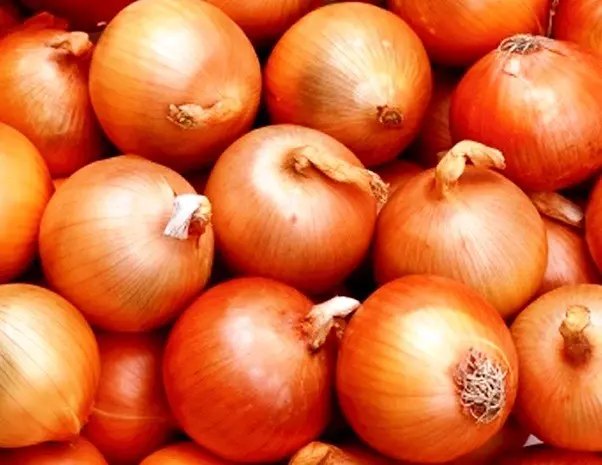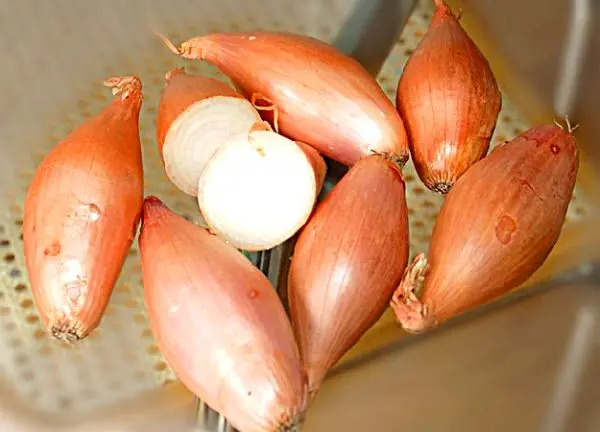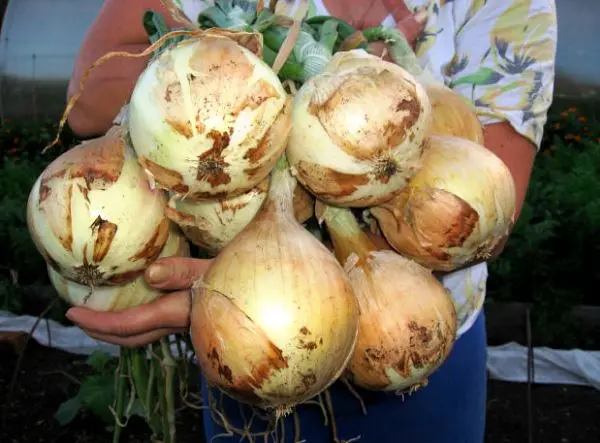Without onions, it is difficult to imagine some dishes, for example, a salad. Yes, and a herring decorated with an onion looks more appetizing on the table. When buying a “teary” vegetable in a supermarket or on the market, not all housewives pay attention to the name of the onion variety, because they don’t really understand the difference, but, by the way, there is one.
Onions are classified according to some parameters.
Depending on the growing season, it can be:
- early (90-100 days);
- medium (100-120 days);
- late (over 120 days).
According to the size of the head, they are distinguished: small (fetal weight less than 50g), medium (weight – 50-100g), large (weight – over 100g).
By the number of bulbs in the nest:
- small nested (1-3 pieces);
- medium nested (4-5 pcs);
- multi-cavity (more than 5 pieces).
By taste: spicy, sweet, semi-sharp, shallots, the taste of which is delicate sweet-sour.

Given all these and some other characteristics, onions, like any other vegetable, have varieties. The most interesting quality for housewives is taste, so we will consider varieties of onions and hybrids in accordance with this criterion.
Sharp
Sharp varieties of onions are represented by fruits covered with several layers of husks. All are early maturing, but their productivity is low. This species can be safely used for storage, as it is long-lived. It is the sharp varieties of vegetables that have a large amount of dry matter, essential oils and sugars. Harvesting is done both manually and with the help of agricultural machinery.
- Arzamas local – a variety of onion with a spicy taste. Root crops are medium in size. Refers to small nested (2-3 bulbs), mid-season. Differs in the increased productivity. Good for storage.
- Bessonovsky local – an old variety of onion. It has a sharp taste, there are 4-5 bulbs in the nest, it can be stored well for 8-9 months, but the main advantage of Bessonovsky is that it is great for growing on greens.
- Chalcedony is the most famous of the sharp ones. Belongs to the category of mid-season. There is usually one bulb per nest. Chalcedony is versatile, suitable for fresh consumption and for processing, also suitable for drying. Keeps well.

There are also hybrids of sharp varieties. The two most popular are:
- Golden Semko F1 is a sharp, small-nested representative. Refers to the early maturing. Under the golden husk, it has juicy white scales. This hybrid has a particularly high yield and disease resistance, but the crop can be stored for no more than 6-7 months.
- Siberia F1 is the best hybrid of the Dutch selection for winter storage. Refers to the early maturing. Edible scales are juicy.
Sweet
Sweet varieties of onions are distinguished by their taste qualities, for which hostesses appreciate this culture. This type of vegetable is very productive, but the only drawback of the root crop is that it mainly grows in the southern regions.
- Red Baron is a representative of the sweet type, which grows best in the Moscow region. It stands out for its red color, which colors other ingredients of dishes. Designed for use in salads, but also well processed. Well kept.
- Exhibition – a classic Dutch onion. It has unusual fruit sizes. Refers to the middle. Regardless of the soil and climatic conditions, it gives a good harvest; it can be grown even in the Urals. The only negative is the susceptibility to various diseases in the process of growth.

- Centaur is a sweet mid-season variety of onion. The value of the Centaur is in its ability to resist diseases in the process of growth and be stored for a long time. Gives a good harvest, which is intended to be eaten as part of salads.
Hybrids
Music F1 is a very sweet white hybrid. Ideal for preparing salads, but even more so for meat dishes. Not suitable for storage, which is a disadvantage of the root crop.
Candy F1 is a representative of large-fruited early hybrids, which is not intended for storage. It is better to eat in salads. Has the ability to produce high yields. The main value of Candy for gardeners is that it is unpretentious in cultivation.
peninsular
Semi-sharp varieties of onion are fruits with a small amount of husk. Its structure, in comparison with sharp relatives, is loose, which exposes the root crop to injury during harvesting. Its main purpose for consumption is to be a component of dishes.

If we talk about the storage of such a bow, then it is considered medium-leaved. In addition, it is this species that gives a good harvest.
- Danilovsky 301 – a variety of onion with a semi-sharp taste. Danilovsky’s main use is in salads. It is very well kept, has 1-2 heads in the nest, belongs to mid-season.
- Zolotnichok – semi-sharp, mid-season, belongs to domestic selection. In comparison with other representatives – a new variety. The average yield is up to two kilograms per sq. meters. It is allowed to be stored.
- Carmen is a semi-sharp variety of onions, the color is purple. According to the period of maturation, it belongs to the middle late. It is valued for its high palatability and ability to be well stored. Suitable for processing, but can also be consumed fresh.
Among the hybrids of the presented type of onions, there are also hybrids.
- Albion F1 – a hybrid of onion varieties, white. Housewives appreciate it, because it is used not only for fresh consumption and in salads, but also for dressing dishes. Suitable for drying. Not suitable for long term storage.
- Spirit F1 is another representative of peninsular hybrids. Spirit is distinguished from the rest by super early ripeness and high quality of the crop. It belongs to the late ones, but it also keeps well.

Shalot
A relative of onions – shallots – is distinguished by a peculiar taste. In addition, it is valued for early greens – tender and fragrant. The taste of fruits when used in dishes does not drown out the taste of other products. This species is called the “gourmet onion”. Shallots keep well, which is facilitated by high density. Shallot refers to the early ripening.
In its composition, shallot differs from onion in a high content of sugars, in addition, it contains ascorbic acid and minerals. But, like onion, it has its own sweet and semi-sweet, spicy. We will consider the most famous of them.
- Kuban yellow is a semi-sweet high-yielding variety. From 1 sq. meters, you can collect 3-4 kg of fruit.
- Kushchevka Kharkiv – peninsular onion. Considered early. Although the yield of this shallot is low – 1,5 kg per 1 sq. meters, but it is well kept. Use the root crop fresh and for conservation. The juiciness of its edible scales is especially distinguished.
- Asterisk – early (early), sharp. The average yield is 1 kg per 1 sq. meters. Its purpose is salads and preserves.
- violet is a semi-sharp variety of fast ripening. Differs in high productivity. Suitable for storage. Considered amateur.
- Siberian yellow is a spicy shallot, the cultivation of which is recommended in the Siberian regions, in the Urals.

Shallots also have hybrids:
Bonilla is a mid-season plant with a semi-sharp taste. The yield is low – 1,5 kg per 1 square meter, but suitable for storage.
Seryozhka is a mid-early hybrid with a high yield. Taste is semi-sharp. Suitable for storage.
Onions of any variety are a healthy product that should be present in the diet of every person. The agricultural technology of this vegetable is not difficult, so anyone who has a piece of land can grow it. It should be noted that, by and large, even its growth occurs in any soil with good aeration. It is only necessary to take into account the predecessor plants, among which are preferred: cereals, legumes, early potatoes, cucumber. The “teary” vegetable is moisture-loving, but does not tolerate excess water. Of course, each variety has its own growing characteristics, adhering to which you can get a good vitamin harvest not only for the coming day, but organize storage in the winter.
Onion will become not only a “home healer”, but also a wonderful decoration for any dish, thanks to the variety of colors inherent in it, which range from pure white and yellowish to pink, red and even purple.
Video “Varieties of onions”
In this short video, an overview of several new varieties of onion sets.











judda ham zõr ekan